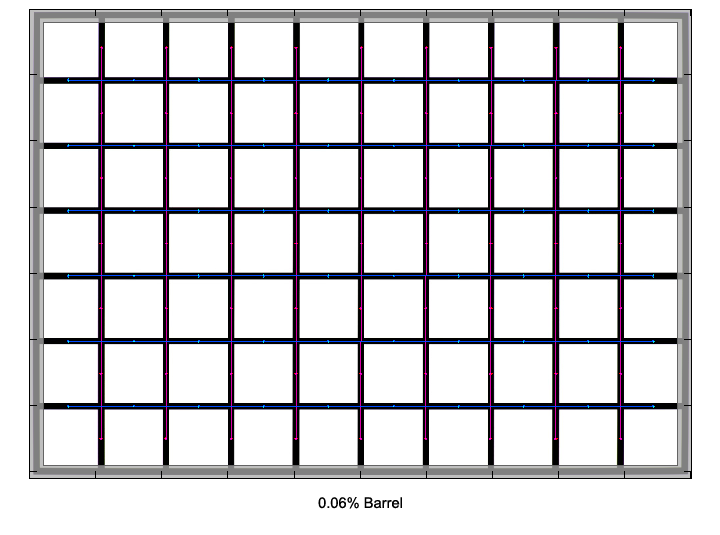|
Page 2 of 3

Distortion
Basically none. Even though Imatest still sees tiny traces of barrel distortion (0.06%), this practically means: zero.

The chart above has a real-world size of about 120x80cm.
Vignetting
With just 2/3 stops wide open, light fall-off towards the corners is surprisingly low for such a lens. As usual, stopping down reduces the amount of vignetting to even lower numbers.
We're performing our vignetting analysis based on
(uncorrected) JPEGs straight from the camera. The JPG engine of the Nikon D3x features a rather flat
gradation curve, thus has a moderate contrast characteristic, resulting in comparatively low vignetting figures - the
corresponding Canon figures are roughly 40% higher due to the more
aggressive default contrast setting.

MTF (resolution)
In the image center, the lens shows very good resolution wide open, increasing to excellent levels at medium aperture settings.
The image borders are very good wide open, too, but don't profit that much from stopping down. The extreme corners are one step softer wide open, but almost catch up to the borders from f/4 and beyond.
The lens showed no focus shift when stopping down (no residual spherical aberration).
Please note that the MTF results are not directly comparable across the different systems!
Below is a simplified summary of the formal findings. The chart shows line widths
per picture height (LW/PH) which can be taken as a measure for sharpness.
If you want to know more about the MTF50 figures you may check out the corresponding
Imatest Explanations

Chromatic Aberrations (CAs)
Chromatic aberrations (color shadows at harsh contrast transitions) are well controlled at large apertures, increasing to values around 1 pixel on average at the image borders by stopping down to f/5.6 and beyond.

Bokeh
Thze lens produces very smooth image blur in front of the focal plane. In the transition zone and behind the focal plane, bokeh is a little less smooth though.
Even though the Tokina does not feature rounded aperture blades, background highlights have an almost circular shape even when stopped down thanks to 9 blades in total. There is a small amount of outlining and, more pronounced, quite some bokeh fringing at highlight borders (see also next section).

Bokeh Fringing
Bokeh fringing is a common issue with relatively fast glass. It's visible as halos of different colors in out-of-focus areas - magenta (red + blue) in front of the focus point
and green beyond.
The Tokina shows a fair amount of bokeh fringing wide open, which as usual decreases by stopping down.
As mentioned in the MTF section already, these shots also illustrate that there is no focus shift by stopping down.
|